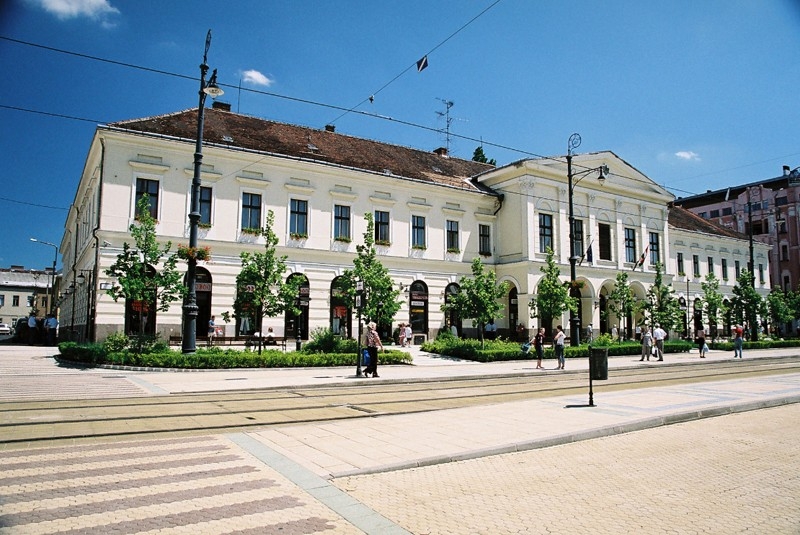 The two-storeyed houses standing on the site of the present City Hall had been gradually reconstructed into one building complex from 1531 on; the locals began to call one part of it (the home of merchant András Tar) “the house of the Council” or “Domus Senatoria”. On the outer façade of the Old City Hall the year ‘1560’ was inscribed. The north side of the first floor housed the big council-room, the little council-room was located in most southern corner of the floor, while the archives and the city printing workshop were situated in the middle of it. One of the window openings of the printing workshop was decorated by a carved Latin inscription from 1583 saying that “…the word of our God shall stand for ever.” That time, Debrecen was one of the most affluent cities of Hungary with the highest number of population, where the Reformed movement worked undisturbed for two centuries. Along with the task of controlling civil institutions, the city council also supervised religious issues. Following the Biblical laws, the principals of the “Christian Republic” served as the moral guardians of the citizens, urging them to temperance, pure family life and virtuous behaviour. The old City Hall was demolished in 1839. The new building, which was erected on the same site according to the plans of Ferenc Povolny and József Ságody, also became the venue of important historical events. During the 1848-49 Hungarian Revolution, Lajos Kossuth, who was referred to as “the Hungarian Moses” by the townsmen, lived and worked in the present-day mayor’s office.
The two-storeyed houses standing on the site of the present City Hall had been gradually reconstructed into one building complex from 1531 on; the locals began to call one part of it (the home of merchant András Tar) “the house of the Council” or “Domus Senatoria”. On the outer façade of the Old City Hall the year ‘1560’ was inscribed. The north side of the first floor housed the big council-room, the little council-room was located in most southern corner of the floor, while the archives and the city printing workshop were situated in the middle of it. One of the window openings of the printing workshop was decorated by a carved Latin inscription from 1583 saying that “…the word of our God shall stand for ever.” That time, Debrecen was one of the most affluent cities of Hungary with the highest number of population, where the Reformed movement worked undisturbed for two centuries. Along with the task of controlling civil institutions, the city council also supervised religious issues. Following the Biblical laws, the principals of the “Christian Republic” served as the moral guardians of the citizens, urging them to temperance, pure family life and virtuous behaviour. The old City Hall was demolished in 1839. The new building, which was erected on the same site according to the plans of Ferenc Povolny and József Ságody, also became the venue of important historical events. During the 1848-49 Hungarian Revolution, Lajos Kossuth, who was referred to as “the Hungarian Moses” by the townsmen, lived and worked in the present-day mayor’s office.